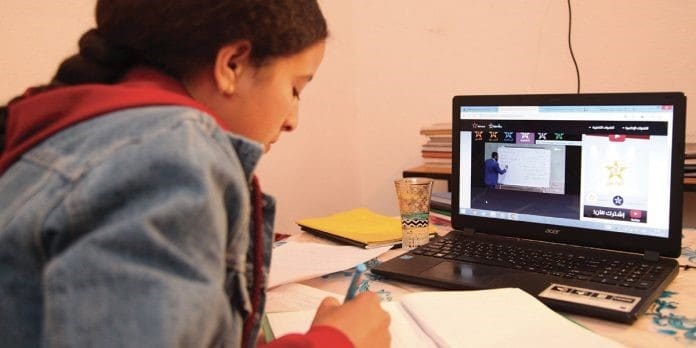The ongoing COVID-19 pandemic has made the shift to online learning more pressing than ever. It has also forced designers of digital learning tools to look at the process through a new lens.
This became clear during a recent training — delivered online, of course — to educators from the Moroccan Ministry of Education on the topic of distance learning tools.
The training was conducted in mid-July by the USAID-funded Reading for Success – National Program for Reading (NPR), which is developing a Massive Open Online Course (MOOC) in support of pre-and in-service teacher training. Upon completion of the MOOC, primary-level teachers across Morocco will be able to access online training and integrate the new Arabic-language curriculum and instructional methods within their classrooms.
Conducted in partnership with World Learning, the workshop brought together educators from the Moroccan Regional Center of Education and Training and school inspectors who have been working for the past year on developing this MOOC for teachers. It was the third in a series of similar workshops and focused on readability and the need to present content in a way that helps the MOOC developers to better communicate their ideas and students to better engage with the content.

Previous MOOC workshops were held in person, with participants working together and with the trainers to think through the design, structure, and content of the MOOC in hands-on, dynamic sessions. With COVID-19, we were forced to move the training sessions online. And, for the first time, participants had to learn about building distance education tools through distance education. The training put them in the shoes of the end user, and they experienced firsthand the many challenges of online learners, such as interruptions from the environment around them or online distractions.
The online training served as a perfect experiential learning opportunity, requiring the participants to think about packaging the curriculum in a format that furthers user engagement. For example, presenting information in different ways to encompass learning styles, using visual or audio cues, and integrating questions at every step can help ensure user engagement, knowledge acquisition, and retention along the way.
While technical difficulties during an online training can be very frustrating to both facilitators and participants, in this case, it served to remind the participants to structure the content in an intuitive way that helps guide the user through the courses.
Even the issues with internet connectivity at times were a useful reminder to take into consideration that the MOOC users might have different levels of familiarity and accessibility to technology.
COVID-19 has quickly transformed the way we communicate, work and learn. And just as the pandemic has demonstrated the importance of online education, it also is a reminder of online learning challenges – and a motivation to develop solutions.
Linda Wafi is a Project Director in Creative’s Education for Development Division.

